December Forex Seasonality Sees US Dollar Weakness Into End Of Year
The beginning of the month warrants a review of the seasonal patterns that have influenced forex markets over the past several years. For November, as we have done for all months in 2016, we have expanded our focus on the period of 1996 to 2015 in recognition of the evolving relationship between economic data, central banks, and financial markets.
The longer observation period captures several crisis events/periods that traders may find analogous to events unfolding today, even as the ramifications from Brexit are unclear: the Asian crisis; the US tech bubble; the US housing bubble; the global commodity bubble; and previous rate hiking and rate cutting cycles, from the major central banks,during times normal (pre-2008) or extraordinary (post-2008). By increasing the sample size to 20 years, we believe the statistical stability of the estimates will have increased relative to utilizing a shorter time-frame/smaller sample size.
Now that the Italian referendum is in the rearview mirror, markets will be quick to focus in on the European Central Bank and Federal Reserve rate decisions on December 8 and December 14, respectively. Given how quickly markets have priced in policy actions by both the ECB and the Fed, there is exceptional potential for EUR-crosses to reverse recent losses and USD-pairs to reverse recent gains.
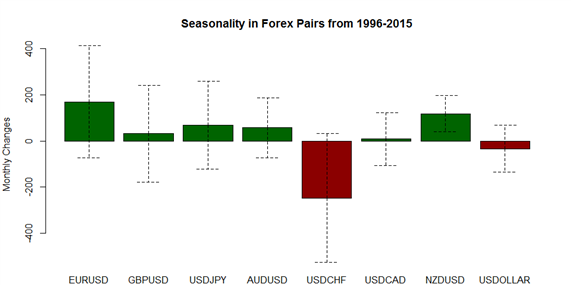
Forex Seasonality in Euro (via EURUSD)
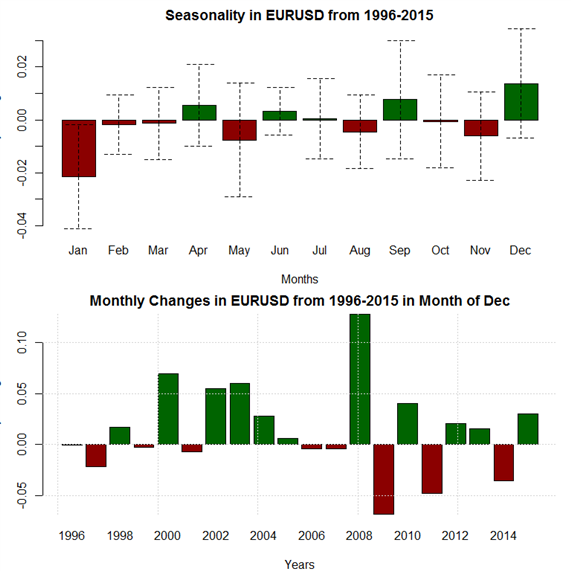
December is a bullish month for EUR/USD, from a seasonality perspective, due to its recently consistent performance metrics. The pair has rallied 55% of the time in December over the past 20-years, and its average performance during this time frame was +138-pips per month. EUR/USD has gained in three of the past four years five of the last eight overall.
Forex Seasonality in British Pound (via GBPUSD)
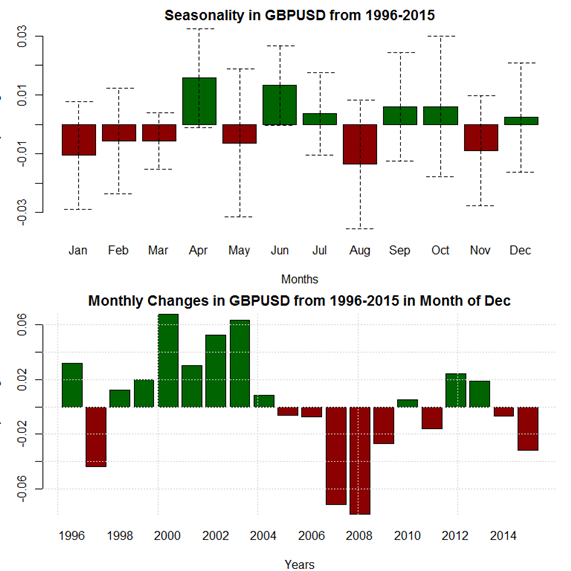
December is a neutral month for GBP/USD, from a seasonality perspective, due to its recently poor performance metrics. The pair has rallied 55% of the time in December over the past 20-years, but its average performance during this time frame was a mere +23-pips per month. GBP/USD has lost ground in each of the past two years, and has only seen gains in three December since 2005.
Forex Seasonality in Japanese Yen (via USDJPY)
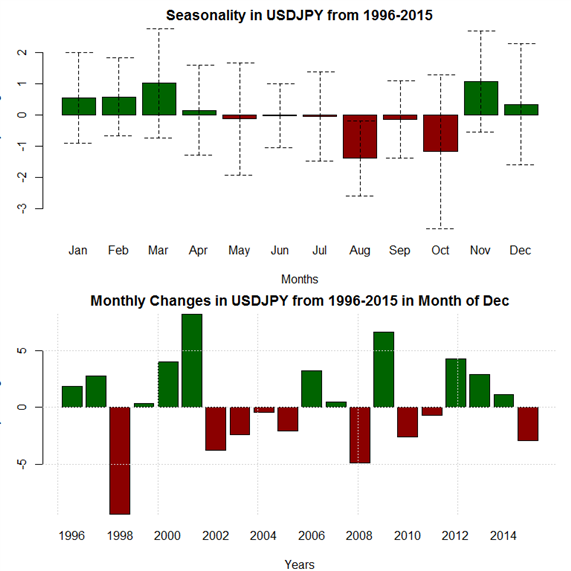
December is a slightly bullish month for USD/JPY, from a seasonality perspective. The pair has rallied 55% of the time in December over the past 20-years, yet its average performance during this time frame was just +33-pips per month. USD/JPY lost ground in December 2015 after rallying in each of the prior three Decembers.
Forex Seasonality in Australian Dollar (via AUD/USD)
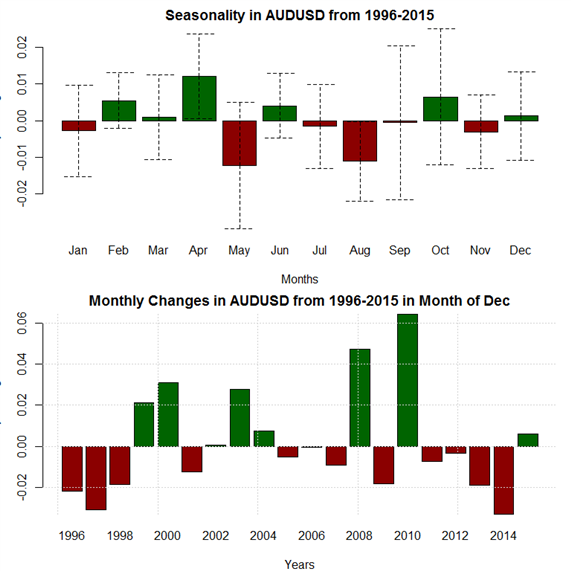
December is a neutral month for AUD/USD, from a seasonality perspective, due to its inconsistent performance metrics. The pair has rallied only 40% of the time in December over the past 20-years, yet its average performance during this time frame was positive at +13-pips per month. In other terms, AUD/USD rallies in December have been significant enough to offset AUD/USD losses in December, despite the greater frequency of losses occurring.
Forex Seasonality in US DOLLAR
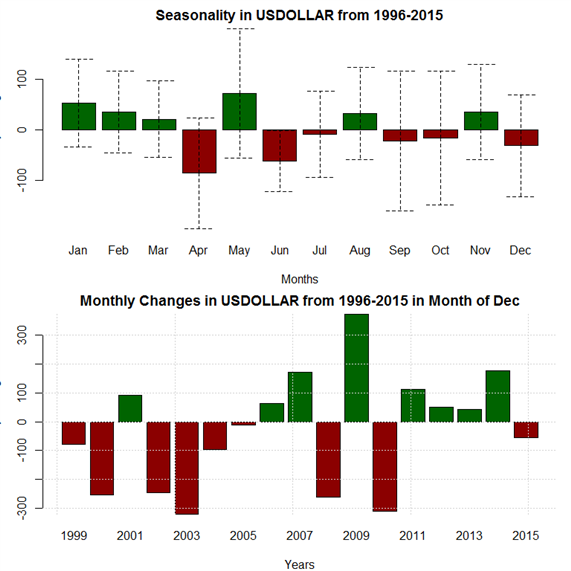
From a seasonality perspective, December is a bearish month for the US DOLLAR Index, its third-worst month of the year. The aggregate tracker of greenback value has fallen 53% of the time while, and has, on average*, lost -32-points per month during that timeframe. Last year the US DOLLAR Index depreciated in December for the first time since 2010.
*US DOLLAR Index only has 17-year data from 1999 to 2015.
Forex Seasonality in New Zealand Dollar (via NZD/USD)

December is a very bullish month, from a seasonality perspective, for NZD/USD. The pair has spent the majority of its time trading higher in December over the past 20 years, and its average performance during this time frame is +83-pips per month. NZD/USD has gained in every December since 2006, but for in 2011 and in 2014.
Forex Seasonality in Canadian Dollar (via USDCAD)
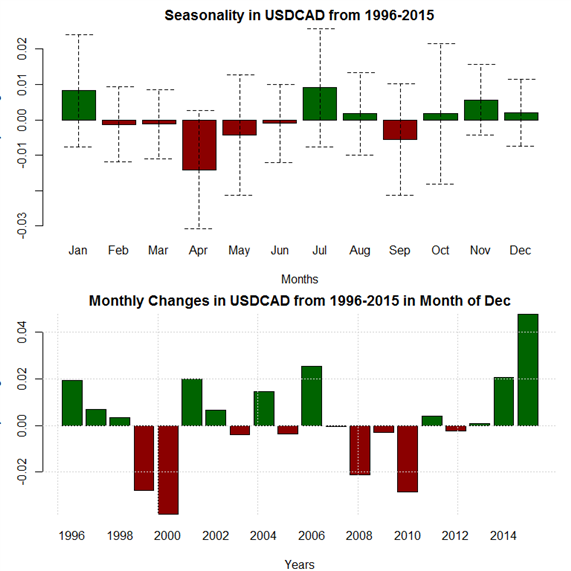
December is a slightly bullish month for USD/CAD from a seasonality perspective. The pair has rallied 55% of the time in December over the past 20-years, and its average performance during this time frame is a mere +20-pips per month. Recently, USD/CAD has gained ground in three of the past four years, with its best performance of the past 20-years coming in December 2015.
Forex Seasonality in Swiss Franc (via USDCHF)
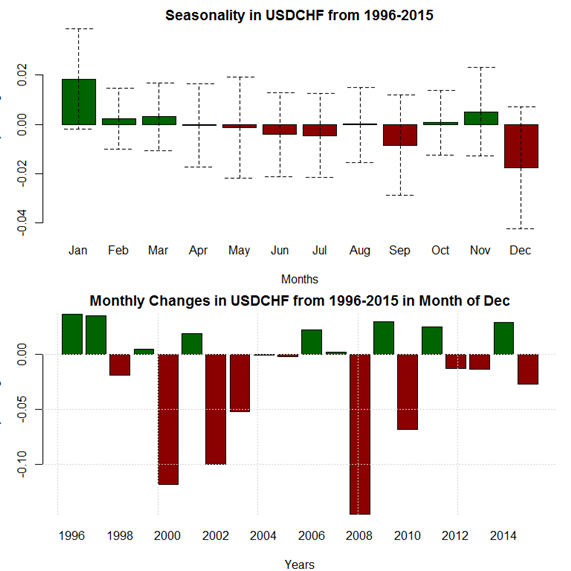
From a seasonality perspective, December is a bearish month for USD/CHF, due to its consistent performance metrics. The pair has depreciated 55% of the time in December over the past 20-years, and its average performance during this time frame was -177-pips per month (median is-135-pips). Recently, USD/CHF has lost ground in December in three of the past four years.
Forex Seasonality in S&P 500
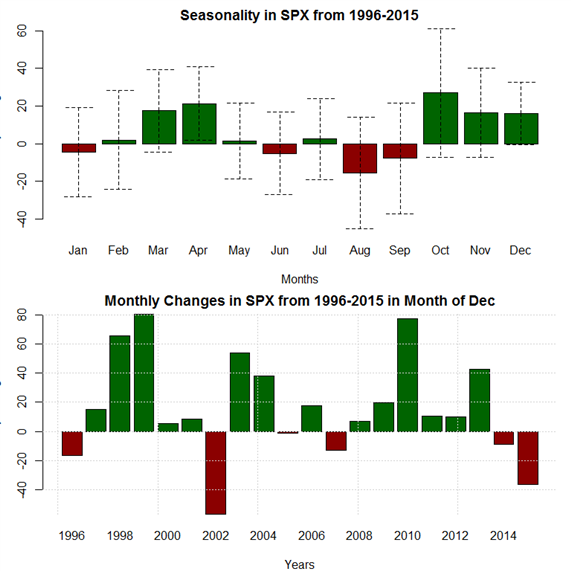
December is typically a bullish month for the S&P 500, from a seasonality perspective, no matter how you slice it. The index has rallied 70% of the time in December over the past-20 years, with the month averaging +15.97-points. December marks the end of the bullish streak to end the year, with Q4 having been the best quarter of the year for US equities over the past 20-years. However, the notion of a ‘Santa Claus Rally’ into year end seems to have been challenged recently, with Decembers 2013 and 2014 producing back-to-back losses, the only time there have been back-to-back losses in two consecutive Decembers at any time over the past 20-years.
Forex Seasonality in Gold

From a seasonality perspective, December is bearish month for Gold, its second-worst month of the year. Mainly, this is due to exceptionally poor performances in December in 2009, 2011, 2012, and 2013. Overall, Gold has fallen 55% of the time in December over the past 20-years, and its average performance during this time frame was -$7.93/oz per month.
Disclosure: You can trade our forecasts in more



